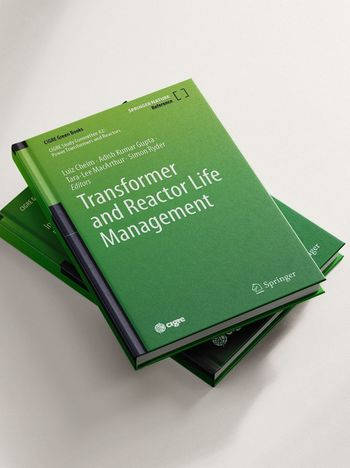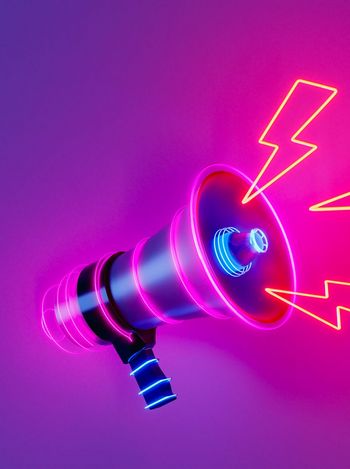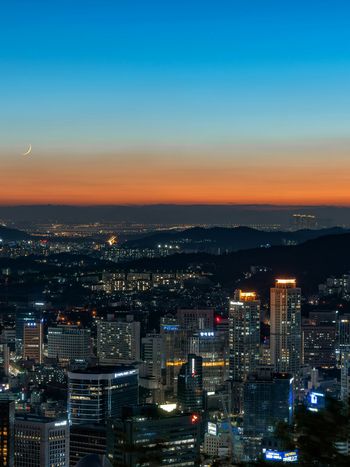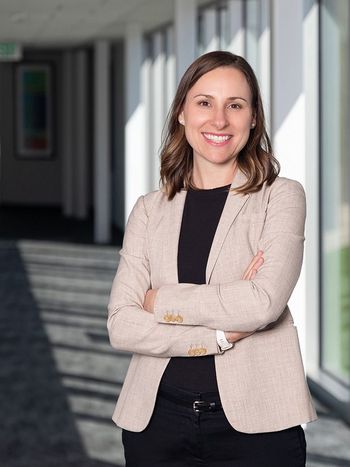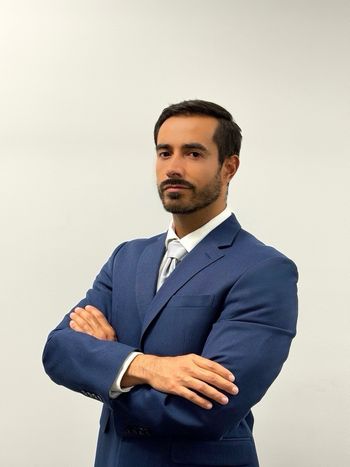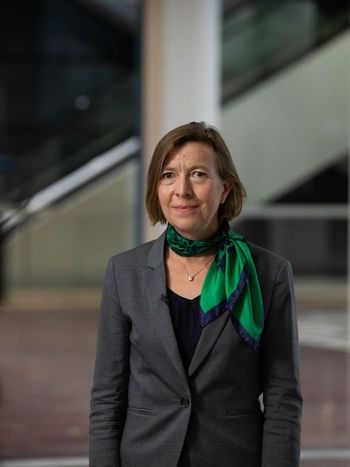CIGRE New Zealand – Fifth year of the A2 power transformers and reactors panel: The distinct challenges and opportunities facing the local electricity sector
What are the distinct engineering challenges in a distant island nation in the South Pacific? Whereas many countries and states have economic reasons to form interconnected grids, the 2,000 km to the nearest neighbour, Australia, makes this unfeasible. New Zealand therefore must be resilient, self-sufficient with affordable energy. Traditionally, hydro and some geothermal energy generation have been relied on. Now there is an expansion of wind energy and a move to include large scale solar. This energy mix requires an extensive transmission system including power transformers to operate, with most of the hydro is in South Island while the majority of the population is in North Island. The CIGRE power transformers panel is the perfect platform to bring a sharing of experiences and discuss solutions.
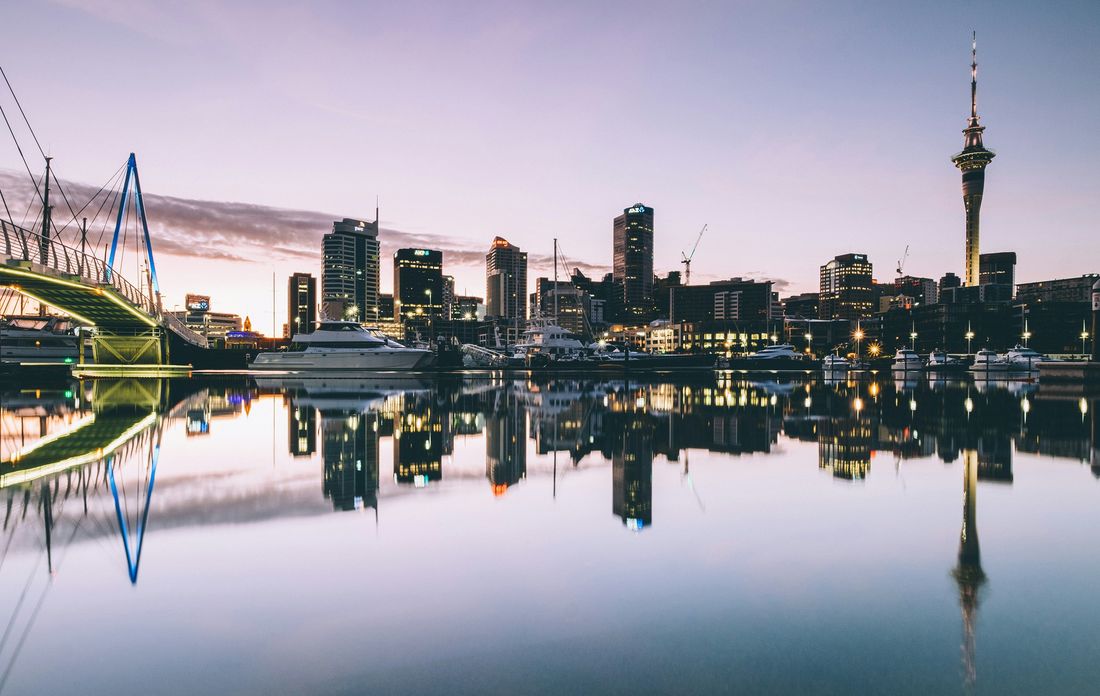
The population is relatively small, at only five million, and so the development of engineering skillsets needs to be supported and carefully managed. NZ has had to become even more self-sufficient over the last few years as COVID-19 led to border closures and supply chain disruption. A twenty-plus year endeavour has been the Aruhiko Power Engineering Excellence Trust, established by industry and the University of Canterbury, to set up a pipeline of power engineering students into the sector. Last year the A2 meeting was the same day as the Aruhiko’s anniversary event at the University of Canterbury, so both could be attended. I was impressed by the strong support given by industry executives and the leadership shown by Prof. Neville Watson and Dr. Andrew Lapthorn.
While NZ shares a joint set of engineering standards with Australia, there are some engineering challenges special to the local environment. One is seismic activity and earthquakes, as the country is on the boundary of the Australian and Pacific tectonic plates. For transformers, these events have caused unexpected trips by relays and cracked bushings.
Flexible materials are sought. Second is that sulphur in geothermal activity results in more corrosion protection being required. Third are the geomagnetically induced currents resulting from solar storms on the long transmission lines traversing the North and South islands. Such currents can lead to tripping or thermal damage in certain types of transformers. The University of Canterbury is working with the transmission operator to understand more about these events and strengthen transformer management. This work was presented in Paris by Soren Subritzky and Dr. Andrew Lapthorn.
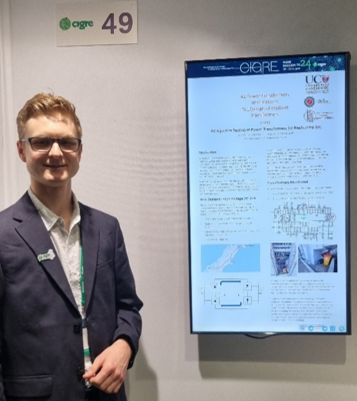
Soren Subritzky with his PhD work, impacts of geomagnetically induced currents on power transformers
2024 has been a busy year of collaboration. It was great to see NZ members at the Australian A2 transformer workshop in Sydney, to network and find out about similar industry directions. It was a pleasure to work with the AU Treasurer Tara-Lee MacArthur and A2 convener Matt Gibson to organise this and effective teamwork led to a successful event.
For the CIGRE Paris session, we collaborated on three Q&A pieces, all which had a Kiwi relevance. One was about how large solar farms will be connected to utility substations. In NZ an oil refinery has been recently decommissioned. There is extensive distribution and transmission infrastructure at that site, and so the land is being repurposed for a solar farm. There is a need to understand how the substation assets, which were not specified to work with reverse power flow, and a solar farm will operate. To learn from experience meetings were held with Northpower and Transpower, and then a position paper created. Second was on online monitoring usage. The group agreed that the focus of using online monitoring needed to be very wide, and capture a utility’s activities to manage risk. The utilities are all cost-focussed, and transformers are generally reliable. As NZ is far from manufacturing centres, it is logistically challenging to return assets for repair. Online monitoring is being used for new assets to alert the user if operation is abnormal. Three was by Hitachi Energy, delivered by the Australian convener, about the need to consider the carbon footprint in lifecycle assessment. There has been a growing requirement by industry to strengthen sustainability in this area.
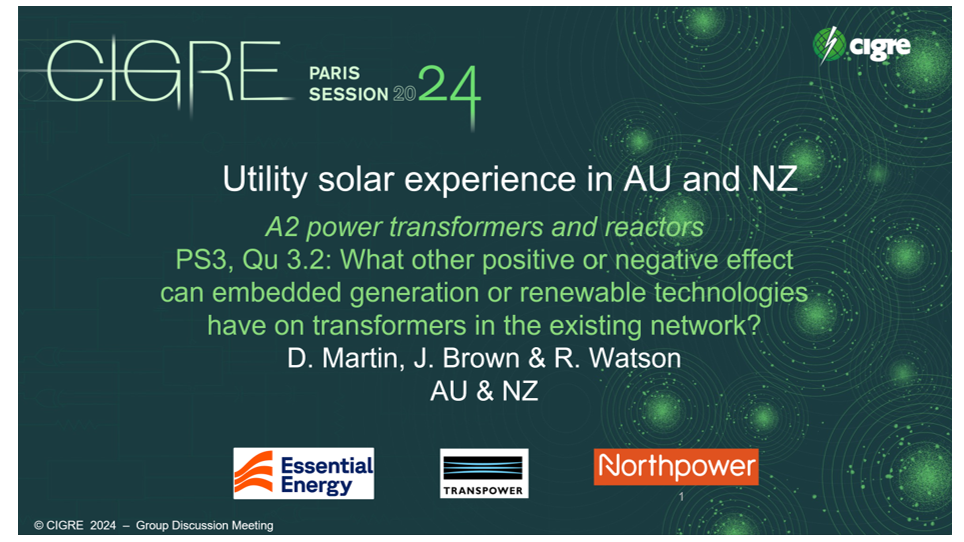
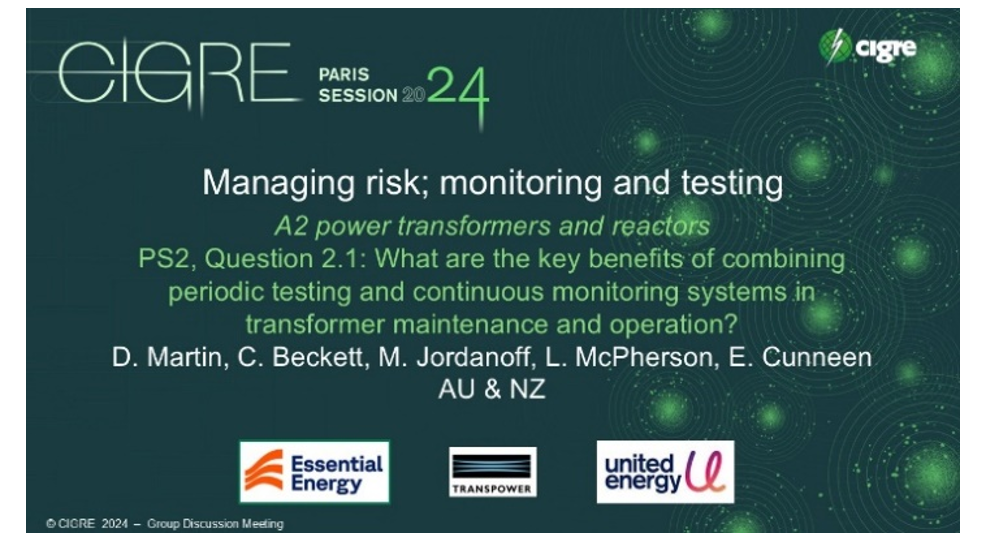
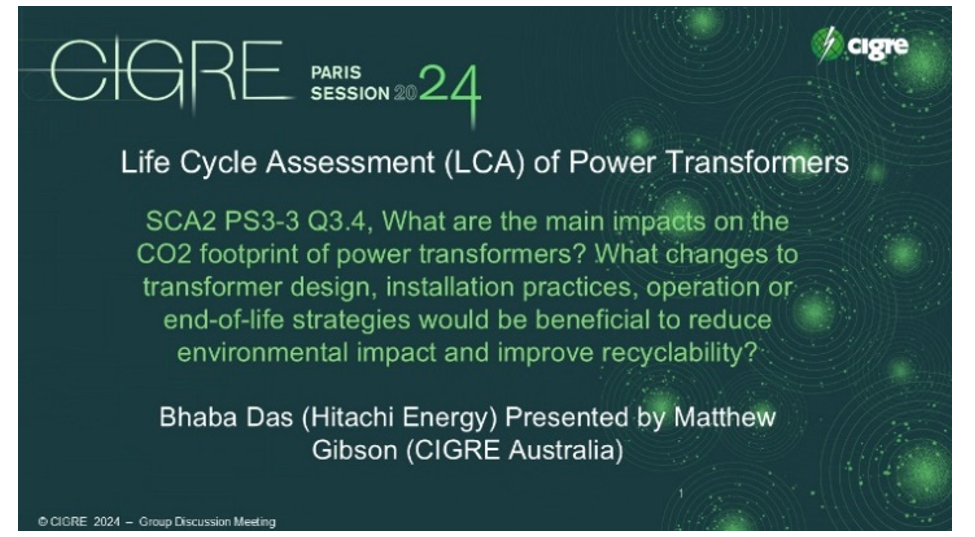
We wrote an article for ELECTRA about how small scale solar, battery and household goods inverters are changing the network. Many consumer appliances now use power electronics, in the form of inverters, and the power factor has been seen to be unity or capacitive, rather than being inductive, as was previously the case. This creates a voltage rise across the transformer rather than a voltage fall. To meet local standards rooftop PV will switch itself off if the voltage rise is too great. The advance in the power factor, caused by this change in consumer appliances, compounds the voltage increase resulting from power injection by the PV panels themselves. This needs to be considered as NZ connects more solar power.
The annual meeting was held in November, attended by nineteen members, and in conjunction with an Engineering NZ conference happening the next day. Thanks to the conference chair Chris Lambell for his support as his employer, BECA, made their facilities available for this CIGRE meeting, and Chris Taylor who was our meeting host. This highlights the strong collaboration between professional societies driving benefits for their members. At our CIGRE meeting there was a lively discussion of various projects happening, helping us all keep abreast of what matters to the industry. University of Canterbury started by Soren presenting their work about solar storms, from a project with the transmission utility and a major generator. They are looking at methods to improve the reliability of grids during geomagnetically induced currents. My talk was next, on solar farm and inverter connection to transformers and observations at the zone substation. Thirdly, there was a discussion about a recent power transformer failure from Sam Mulquiney. In last year’s feedback survey one member expressed an interest in more case studies about failure, so it was great Sam could respond to this need. Fourthly, Dr Bhaba Das gave a talk about assessing transformer end of life, within the context of mathematical uncertainty, and what to do about this. Fifthly, Philippe Reboul presented a Life Cycle Analysis comparison of the environmental footprint of transformer oils highlighting the need to take into account the impact of farming of crops for bio fluids. A special thanks to Trevor Lord, Thasegen Naidoo, Doug Ray, Nishan Sooknandan, Seamus Allan and Alex Castellanos for the engaging discussions. Solar farms are forthcoming, and the utilities are working through how to manage their connection. Also, thanks to Leo Liu, Matthew Ting, Russell Watson, Mark Cozens, Roger Clary, Andrew Lapthorn and Troy Balderston for joining in.
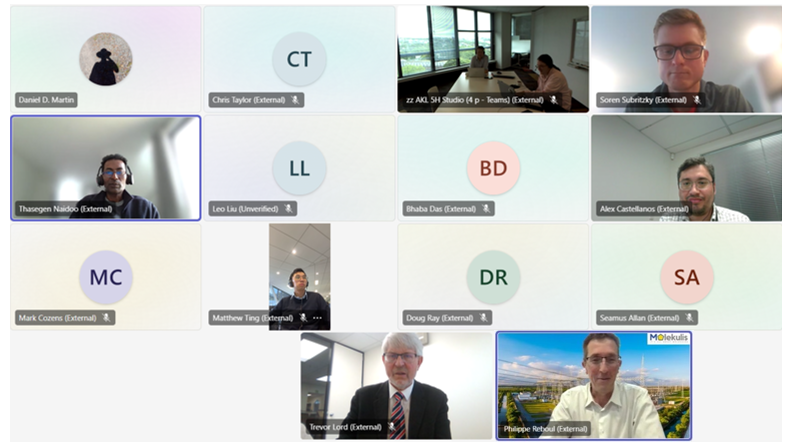
| 1 | Solar storms and impacts on power transformers, Soren Subritzky, University of Canterbury. |
| 2 | Solar farms and impacts on transformers, Dan Martin, Essential Energy. |
| 3 | Case study of a recent transformer failure, Sam Mulquiney, Essential Energy. |
| 4 | Can we reach a consensus on transformer technical end of life estimation?, Dr Bhaba Das, Hitachi Power. |
| 5 | Environmental footprint of transformer oils (not just CO2!), Philippe Reboul, Molekulis. |
As I reach the end of my five-year term as convener I look back with pride on what has been accomplished since the establishment of NZ.A2 as a new panel. I hope that these newsletters, documented in Electra, can help provide useful guidance to future conveners, not just for NZ.A2, but for panel conveners globally. My thanks so to everyone involved with contributing to NZ.A2 over the past five years and to Electra for their support.
Dan Martin is chartered professional engineer with over twenty years of experience. He is a chartered member of Engineering New Zealand, a senior IEEE member and a registered professional engineer of Queensland. He is currently the Treasurer of CIGRE New Zealand and their A2 power transformers and reactors convener. He is a senior engineer at Essential Energy, which is a state-owned electricity infrastructure company in Australia, working in zone substations. He has a PhD from University of Manchester.
Banner and thumbnail credit: Dan Freeman on Unsplash
